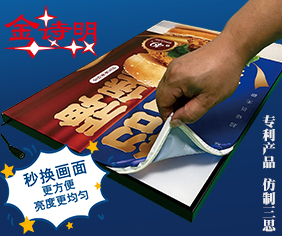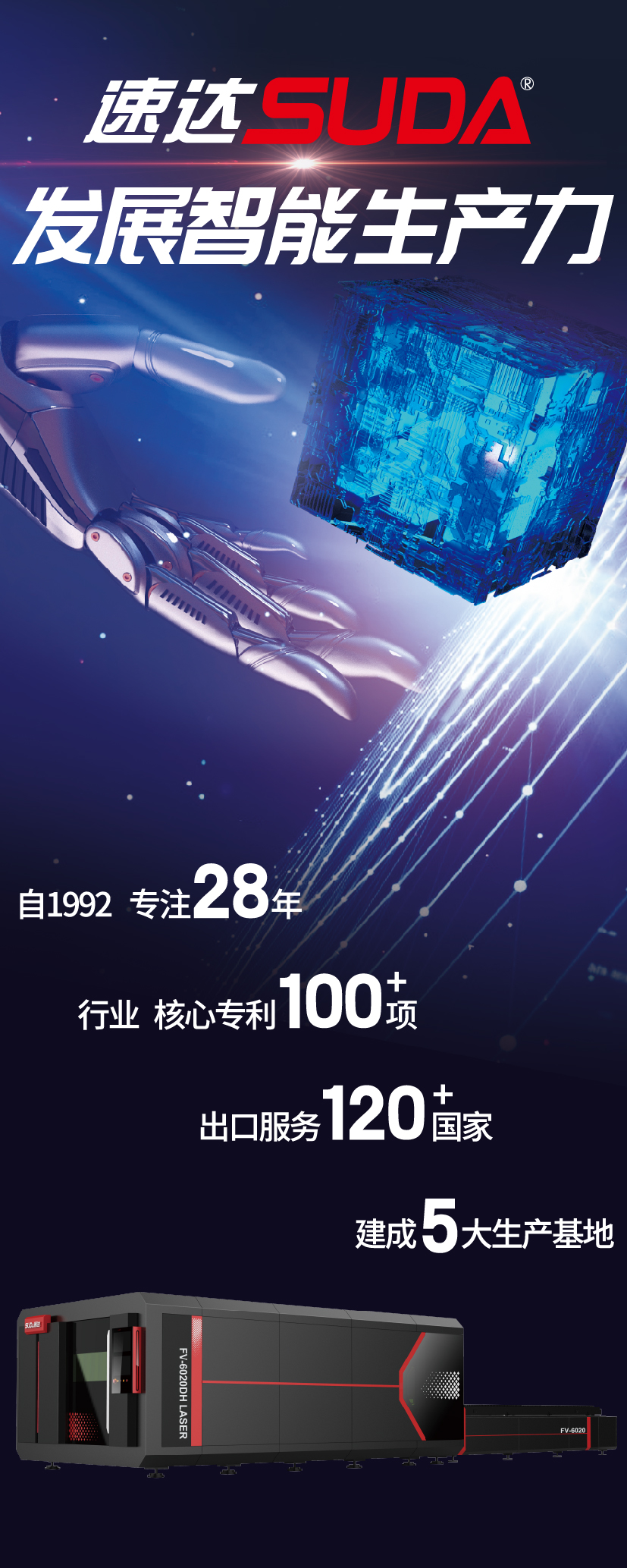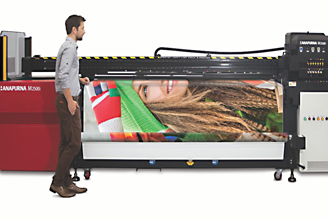

The rapid pace of technological development and innovation in the area of wide-format digital printers has dramatically changed the landscape of print possibilities for the sign and commercial graphics industry. From ultra-high resolutions and ever increasing production speeds to the ever-widening range of printable substrates—the technology that enables these feats has become the backbone of this progress.
对于标识和商业图形行业来说,宽幅数码打印领域的快速发展和创新已经很明显的改变了打印可能性的一个构图。从超高的分辨率和不断增加的打印速度到打印材料范围的不断扩大,能够操作这些性能的技术已经变成了这一壮举的核心部分。
The end-goal, of course, has always been increased quality and productivity. Here we present perspectives on today's printer technologies, from some industry members who are directly involved in printer manufacturing. We will look at what they feel are some of today's most important technological developments, and then drill down into three specific technology areas: printheads, LED UV-cure technology and media transport systems.
当然,最终的目标还是提高质量和生产率。我们现在提出的一些关于打印机方面的观点,都是来自一些直接接触打印机生产制造的行业人士的观点。我们也会一直关注他们对当今行业内的关键技术的发展的看法,并且也会深入探究三个具体的技术领域:打印喷头,LED UV固化技术和介质传输系统。
Most Important Technologies
关键技术
There are obviously different opinions as to which technology introduced to wide-format printing in the last five years might be the most important—the answer really depends on who you ask. And with the advent of so many technologies—true grayscale printing, latex ink technology, hybrid inks, multi-drop capabilities, etc.—it's instructive to consider a few perspectives.
关于近五年内哪种引进的宽幅打印机技术最重要,观点不一,答案还是取决于你问的对象。而且随着多种技术的涌现-灰度打印,乳胶油墨技术,混合油墨,传接功能,等等-这些都是需要考虑的因素。
Deborah Hutcheson, director of marketing, Agfa Graphics North America, takes a bit of a holistic view."Wide-format technology advancements can be characterized as a process of evolution rather then one of revolution,"she says."We continue to see steady progress in printhead technology, UV ink curing technology, image processing techniques and media transport automation."
爱克发图文北美公司市场总监,黛博拉·哈奇森,阐述了下全局看点。“宽幅打印技术的发展可以被定义为是一次进化而不是一次改革,”她说到。“我们能看行业各个方面稳定的发展,在打印喷头技术方面,UV固化技术,图形处理技术和介质传输自动化技术。”
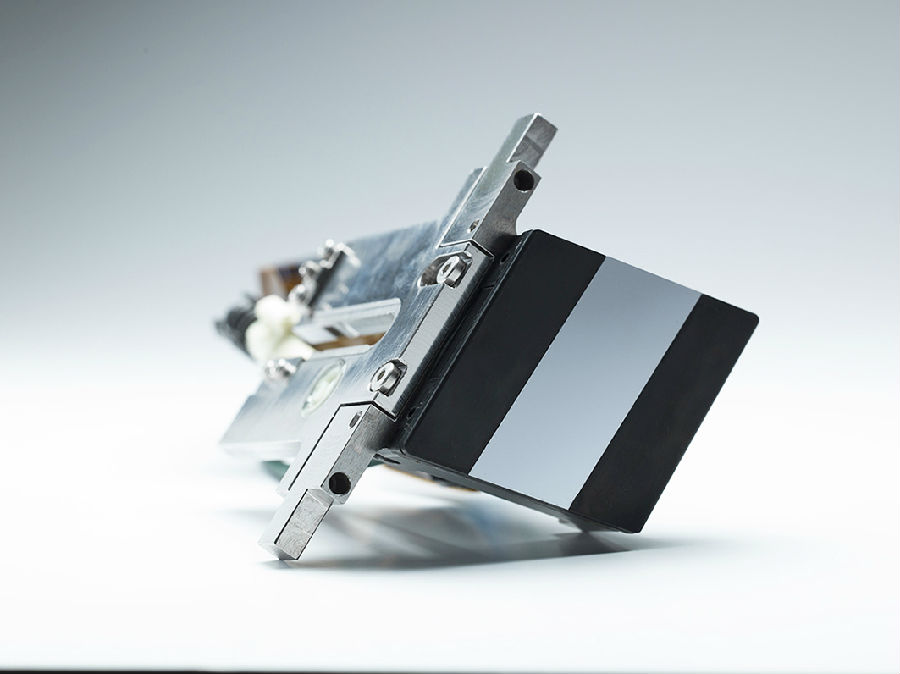
On the other hand, Joseph J. Ryan, director of business development for Ricoh Printing Systems America, points specifically to the availability of white ink to the industry as important. Opaque white ink, he says, is now being widely used in a variety of sign and graphic applications.
在另外一方面,理光打印系统美国公司的业务总监,约瑟夫·J·瑞恩,特别指出白色墨水在行业中的重要性。他说,不透明的白色墨水,现在正广泛的应用于各种标识和图形图像中。
"White tends to have a physically large pigment size, which made it a bit harder to work with in the past, but that has changed,"he says."You need that white opacity for many different digital sign applications such as backlits, which benefit hugely from white ink. If you want to print onto a dark surface, you have to put down a white undercoat; so white ink has done a lot to broaden both the colors of substrates and the colors of inks people are using."
“白色通常着色范围会比较大,在过去,这个是不好处理的,但是现在情况改变了,”他说。“很多灯箱标识应用中会用到白色不透明的,例如背光式的,这样白色油墨就比较好用,如果想要在黑色表面上打印,就必须要放用白色底漆;白色墨水已经帮助延伸了很多基材的颜色及油墨的颜色。”
This development has also helped put wide-format inkjet on a more equal footing with screen printing.
这一发展也使得宽幅打印紧跟上了丝网印刷的步伐。
Andrew Oransky, vice president of sales and marketing,,Roland DGA, Irvine, California, believes the emergence of LED curing systems for UV-cure printers was the biggest game-changer of the last five years.
Andrew Oransky,罗兰DGA的销售副总裁,欧文,加利福尼亚州,认为UV固化打印机中LED固化体系的出现就是近五年中最大的转折点。
"LED-based UV-cure technology has solved a lot of problems that earlier UV-cure printer technology was plagued with," he says, pointing to the disadvantages of traditional curing lamps such as the requisite high heat, high energy consumption and relatively short lamp life.
他说到,“LED UV固化技术现在已经解决了很多问题,都是旧式的UV打印机一直困扰的问题,”同时也指出了传统UV固化灯的不足,例如高热量,高消耗,和使用寿命相对较短。
"When ink formulators and lamp manufacturers came together to develop effective LED curing systems, all these problems were solved," Oransky says.
Oransky说,“当墨水工程师和LED固化工程师能够结合成一个高效的LED固化系统时,这些问题都能迎刃而解。”
Mark Goodearl, senior ink product manager,EFI Inkjet Solutions agrees."Production speed of LED-based UV-curing inkjet is the most significant development because it eliminated so many of the challenges that come with other solvent and even traditional UV,"he says."Even with the advent and growth of latex, LED-UV printing has emerged as higher-volume, low-energy production system for businesses that have grown their output volumes and still need to print onto a broad range of substrates."
EFI喷墨公司的油墨产品部高级经理马克 Goodearl也赞同这个说法。“LED UV固化中的生产速率是最有意义的一项进步,因为它解决了其他溶解性甚至是传统UV墨水解决不了的问题,”他还说到,“即使有乳胶墨水的出现和发展,LED-UV 打印机还是有优势的,具备高产量,低能量运行系统,这样能帮助企业提高他们的输出量以及可以在多种不同的基材上打印。”
Printhead Technology
打印喷头技术
The printhead is the most complex and crucial part of any inkjet printer. It's safe to say that more research and development has gone into improving printheads than any other part of a printer—and today's printheads are more sophisticated, versatile and complex than ever before.
打印喷头是每台喷墨打印机中最复杂也是最关键的部分。可以很负责任的说,现在改进打印喷头的研究调查比其他部件都多——如今的打印喷头比以前更精致,通用,以及结构更复杂。

"The most important recent development for printheads," says Ricoh's Ryan,"is the availability of page-wide arrays—very long arrays of linear printheads, such as the SAMBA printhead developed by Dimatix."Similar in concept to HP's Page-wide array printhead technology, this design allows a much wider print swath in a single pass with guaranteed perfect nozzle alignment, he says."Historically, if you wanted to print across a 12"or17" path, you'd be using smaller printheads, with around one thousand nozzles each, and you would have to have their orifices stitched together."Eliminating the stitching process—and the slight misalignments that can arise from it—results in much higher speeds with higher quality printing, he says.
日本理光的赖安说到,“目前打印喷头中最重要的进展就是打印页面范围的增大”,线性打印喷头的范围很大,例如Dimatix 研发的SAMBA 打印喷头。他说,在概念上类似于惠普的打印喷头技术,这种设计能够保证大范围的打印片能够很好的对准打印喷嘴。“这么说吧,如果要从12’’转变到17’’打印,就要换小的打印喷头,每个大约有1000个喷嘴,然后每一个都要对应相应的针头。”消除细缝的过程中可能会出现轻微的失调问题,会影响高质量的打印的打印速度。
"At Agfa we feel that several printhead developments are key," Hutcheson says."Higher nozzle densities, the use of finer droplets, higher jetting frequencies, variable drop capability which improves gray scale, higher jetting robustness (for greater reliability) and wider ink compatibility are all important." These developments have helped her company deliver UV inkjet systems with higher productivity, higher image quality and improved system reliability, she adds.
哈奇森说到,“在爱克发,我们都认识到打印喷头的发展是最关键的部分。”“喷嘴密度越高,打印墨点更精细,打印频率也越快,打印墨点可变也能提高打印灰度,喷墨性能更好,墨水相容性更大,这些都很重要。”这些进步都帮助她的公司进入了高产量,高画质图像的UV喷墨打印系统,也提升了这些系统的稳定性。

Ryan says that with the ability to produce multiple drop sizes from a single printhead one can achieve very high resolution with tiny drops, while at the same time affording faster printing because larger drops can also be laid down on areas where needed. To achieve a larger drop size from a printhead nozzle with a relatively small native drop size, several droplets are ejected from the printhead nozzle in rapid succession, and then the drops merge in mid-flight before reaching the media surface as a larger single drop.
赖安说道:“随着单一喷头的墨点多元化,一个打印喷头可以用很微小的墨点打印出高分辨率的图像,而同时又能提供更快的打印速度,因为大一点的墨点可以放在其他的合适的位置。为了实现同一个打印喷头小墨点融合成大墨点,打印喷嘴的几个墨点需要同时快速喷射,然后在落在打印基板表面形成大墨点之前,互相融合。
Hutcheson says that looking forward,"Agfa sees printhead technology continuing to evolve and improve productivity, quality, jetting robustness. We see the future technology offering a broader ink scope, a lower cost per nozzle and page wide arrays for single pass printing."
哈奇森在展望打印技术未来发展时说道:“爱克发见证了打印喷头技术的持续发展,在生产量,质量,喷墨性能方面都有提升。我们也看到了未来会有的技术发展,单一通道打印方面也会有提升,打印墨水范围更广,喷嘴的成本更低,打印页面组合幅面更广。”
LED UV-Cure Technology
LED UV固化技术
As noted above LED-based UV-cure technology is having a powerful influence on the industry, but how does it differ from conventional UV-cure print technology? They differ both in the lamps used and in the ink formulations.
正如前面说的,LED UV固化技术在行内领域内产生了重大影响,但是和传统的UV固化打印技术有什么不同呢?这两者在固化灯和墨水构造上都有不同。
EFI's Goodearl says that unlike the conventional wide-spectrum arc and mercury vapor lamps typically used in UV-cure systems, LED lamps produce a much narrower spectrum of light. The LED-UV inks are formulated with a set of special light-reactive monomers that can respond to the narrower band of LED light.
EFI的Goodearl说到,和UV固化系统中传统的光谱弧形灯和汞蒸气灯不一样,LED灯发出的光谱更窄。LED-UV墨水是由一系列特殊的能够反射一系列窄波段的LED灯的反射光单体组成的。
However, "unlike with standard UV lamps, there is no warm up period required for LED-based cure lamps," Goodearl says. "As a result, LED lamps last longer."
然而,“和标准的UV灯不一样的是,LED固化灯不需要升温阶段,”Gooderal说到。“所以,LED灯的使用时间更长。”
The other main benefit, he says is the elimination of the high heat that conventional UV cure lamps produce (upwards of 200 degrees). "LED lamps cure at about 80 degrees Fahrenheit, which is much cooler than both the heat generated by conventional UV lamps and the heat required to dry prints on latex printers. This creates tremendous energy savings." In addition, he points out that it also means that users can print onto heat-sensitive substrates such as corrugated board and very thin films that can warp, curl or melt due to high heat.
他说,另外一个主要的优点就是,消除了传统UV固化灯存在的高热量问题(高达200度)。“LED灯固化只需要80华氏度,比传统UV灯和乳胶打印机固化的累积热量还低。这就节省了巨大的能量。”另外,他也指出,这也意味着用户可以在热敏材料基板上打印,例如波纹纸板和一些遇到高温会弯曲,变形的薄膜材料。
Jay Roberts, product manager of UV printers for Roland DGA, points out additional ink differences."These inks are dramatically different in both chemical make-up and functionality,"he says."Conventional UV-curable inks tend to be more aggressive, bonding to a slightly greater surface area. However, UV-LED inks have an added bonding agent. While UV-LED inks do not have any negative effects upon materials, they do tend to bond less aggressively to substrates unless a stronger chemical bonding agent is used in the formula," Roberts says.
罗兰DGA的UV打印机产品部经理,杰伊·罗伯特还特地指出了墨水的不同。“这些墨水在化学成分和作用上都有很大的不同,”他说到。“传统的UV固化墨水比较强烈的,能够作用到大一点基材区域。但是,UV-LED墨水添加了粘合剂。当UV-LED墨水在基材上没有什么副作用时候,他们就不会很强烈的作用在基材上,除非添加了更强烈的化学粘合剂,”罗伯特说到。

Digital UV inks have been evolving since their introduction to the market in 2005, gradually improving in adhesion, flexibility and durability. The problem has been that when you improve adhesion, flexibility is often lost—great for printing onto rigid substrates, but this industry demands a huge range of substrates.
数码UV墨水从2005年进入到市场开始,就一直在改善,逐步改善附着力,灵活性和耐久性。问题就是,当提高附着力的时候,灵活性就没有-这样就对刚性板材的需求就会很大,但是行业需要各种类型的基材。
Goodearl says that his company has been working on the flexibility issue as well."A few years after EFI established an LED production printer, we addressed one of the remaining challenges with LED. Working with 3M we developed an ink formulation that doesn't have as hard a cure and won't crack when stretched or 'silver' when laminated,"he says."Now LED-UV printer users can create fleet and vehicle graphics and other applications that require greater flexibility."
Gooderal说到,他的公司也一直在研究灵活性的问题。“在EFI推出了LED打印机几年后,我们就解决了LED打印机存在的一个问题。和3M公司合作期间,我们研究了一种墨水配方,这种墨水容易固化,拉伸时不会开裂,层压时也不会有痕迹,”他说到。“现在LED-UV 打印机厂商可以制作船舰和交通工具上的图像,以及其他一些需要比较大的灵活性的应用领域中。”
"No digital UV ink can meet every demand placed upon it,"Roberts says. "Instead these inks tend to be'middle-of-the-road,' providing the best results for the most widely-used substrates. We have yet to develop formulations that meet all of the requirements equally."
“没有一种数码UV墨水可以满足所有基材的要求”罗伯特说到。“然而这些墨水更趋向于中间水平的,能够满足大部分普遍使用的基材的需求。我们还是必须要研究出能够满足所有要求的墨水配方。”
Roberts notes that in the screen printing industry, where UV-cure technology have been in place for many decades there are 47 different "flavors" of UV-curable screen printing ink, each designed to meet different application requirements.
罗伯特补充到,在丝网印刷领域,UV固化技术已经存在了几十年,还有47种不同的丝网印刷UV固化墨水种类,每一种都能够满足不同应用的不同要求。
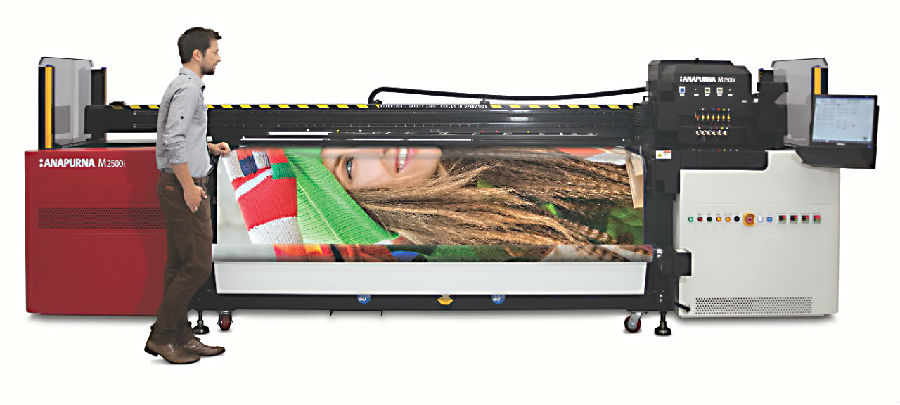
Roland has four of these UV ink"flavors"for digital printing. The company developed a"traditional"UV ink (ECO-UV) to satisfy the majority of requirements, then added additional formulations (ECO-UV 2 and ECO-UV 3) designed to adhere well to PE (polyethylene), PP (polypropylene) and PVC (polyvinyl chloride) substrate families."As these inks were evolving,"Roberts says, "we also introduced our ECO-UV S ink, a truly flexible ink, much more flexible than existing formulations."
罗兰有四种数码印刷的UV墨水配方。公司也有一种传统的UV墨水,(ECO-UV),能够满足大部分要求,同时也添加了一些额外的原料(ECO-UV2 和ECO-UV3),可以很好地粘合聚乙烯板,聚丙烯板和PVC板等系列。罗伯特说到,“随着这些墨水的进化,我们也推出了我们的ECO-UV S墨水,一种灵活性好的墨水,比之前的墨水都要通用。”
EFI's Goodearl notes that initially a big barrier to LED's growth was its slower production speeds."Reaching full production levels with LED was the initial spark in the chain of events that will likely see the entire UV space in inkjet imaging migrate to LED at some point in the future."
EFI的Gooderal说到,最初的一个LED固化技术发展缓慢的原因就是生产速率比较低。“在整个过程中,LED固化灯成批生产就是我们一直的发展目标及动力,希望能够通过LED固化灯的某一点的发展,能够看到整个UV行业的发展空间。”
Additionally, Goodearl points out that in April of last year the European Union released EU directive 2009/125/EC which established a ban on mercury-containing lamps in the European Union."This includes HID (high-intensity discharge) mercury vapor lamps often used in conventional UV-curing inkjet printers. While the EU eventually decided to postpone the ban until September of 2018 in Europe, the prospect of a ban is certainly a motivating factor for wider adoption of LED-based curing systems."
另外,Gooderal指出,在去年4月,欧盟在欧盟指令2009/125 / EC中公布了一个汞灯禁止条例。这包括HID(高强度放电)汞蒸气灯,通常用于传统的UV固化喷墨打印机。虽然欧盟最终决定推迟禁令,直到2018年9月才施行,但是这一推迟必然是推动LED固化系统发展的一个很大的因素。
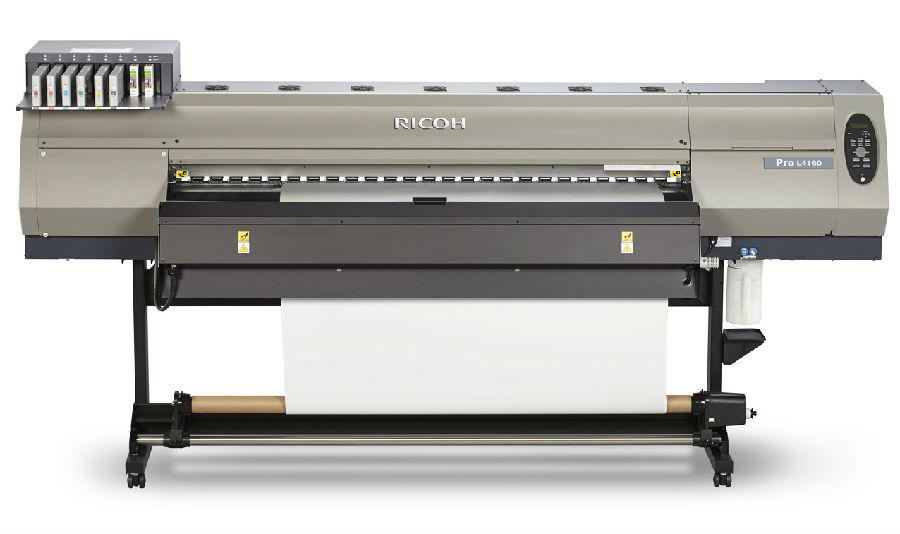
Media Transport Technology
传送介质技术
Another crucial area of printer technology has been the evolution of media transport technologies. It has become especially important with the larger high-speed flatbed presses where rigid substrates are involved; and also in the area of production-grade inkjet textile printers.
另外一个打印机技术的关键部分就是传输介质技术的进化。当涉及到在平板印刷刚性板材时,这一点尤其重要;在工业纺织打印机领域也是一样的。
"In the new 'normal' for today's print environment,"says Chris Guyett, sales operations and marketing communications manager for Durst Image Technology, Rochester, New York,"maximizing print volume and production efficiently, needs to be the top of the list of operational concerns for print service providers. With higher print speeds and automation workflows, media handling and transport have become integral to today's printing systems."
纽约,罗彻斯特,杜斯特图像技术的市场销售经理,克里斯 Guyett说,“在如今的新新打印环境中”,“最大化打印体积和生产速率,是打印服务中操作清单事项的首条。有了高打印速率和自动化的工作流程,介质的操作和传输方面在现如今的打印系统中就算完整了。”
Guyett says that older older media transport systems worked by simple motors, electronic circuit boards and often required manual corrections by the operator during printing. However, newer transport systems function with a combination of mechatronics and software, he says."Constant and consistent sensory measurement of the state of the media (weight, roll diameter, width, thickness, tension, etc.), where the calculation of these measurements and then constant controlling of the right parameters allow the transporting of even difficult and dimensionally unstable medias in a reliable and consistent way."
Guyett说到,旧式的介质传输系统的运行是通过简单的发动机和电子电路板,打印时经常需要手工修复。但是,新型的介质传输系统是通过一系列的机械和软件组成的,他说。“持续不断地介质测试(重量,卷曲直径,宽度,厚度,张力等等。),把握好所有这些测量的累加量和正确参数的控制,才能保证在难度高和尺寸不稳定的介质上能够稳定,持续的传输。”
Becky McConnell, associate product marketing manager, FUJIFILM North America, Graphic Systems Division, explains the advantage of automated sheet-loading systems."Fully automatic load and offload reduces handling time significantly,"she says."It allows high-production print providers to maximize the efficiency of their machines."
图形系统分部,北美富士胶片的产品部经理,贝基·麦康奈尔,对板材装载自动化系统的优点做了解释。“全自动加载和卸载系统很大程度上减少了操作的时间,”她说到。“这种也能帮助打印厂商把设备的生产率最大化。”
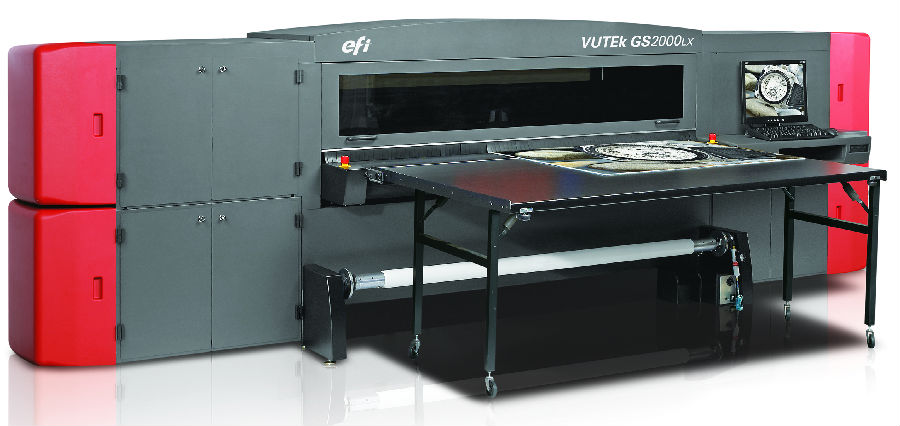
The Inca Onset presses sold by Fujifilm use the Hostert sheet-loading system, McConnell says. A pallet full of sheeting is placed at the loader end and a single sheet is picked up with a vacuum apparatus (equipped with a tapper and air-jetter). The grippers then pull the sheet onto a lay table for registration. The offload system then pulls the sheet from the lay table to the printer's bed and the table vacuum is engaged to draw down the sheet. Once printing is complete, the offload system then uses vacuum grippers to pull the sheet off the bed and onto the off-load pallet for stacking.
The Inca Onset在销售富士胶片的霍斯特尔特的材料装载系统,麦康奈尔说到。整整一货板的板材放在装载装置的末端,单一的板材放在真空仪器上(配备了开孔器和空气喷洗器)。夹合器先把板材放在打印台上记录。然后卸载系统就会把板材从放置台放到打印机床上,然后打印真空台就可以吸附板材。打印一旦完成,卸载系统就会用真空夹合器把板材从打印机床上放到卸载台上,堆积起来。
This kind of auto load/unload system guarantees that the printer's high print speeds are not hindered in any way.
这种装卸载自动化系统很好的保证了打印机的速度不会被任何方式影响。
"As throughput on high production presses continues to grow," McConnell says, "attention will continue to focus on media transport and handling systems. In the future, I would expect that high-production press manufacturers and distributors will increasingly partner with finishing solution providers to create a seamless manufacturing process for high throughput wide-format printing."
麦康奈尔说到,“随着高产量输出的持续增长,我们还是会继续关注介质传输和操作系统。在未来,我们还是希望更多的高产量设备制造商和分销商、加工厂商合作,能够为高产量宽幅打印机创造一种完美的加工制作流程。”





